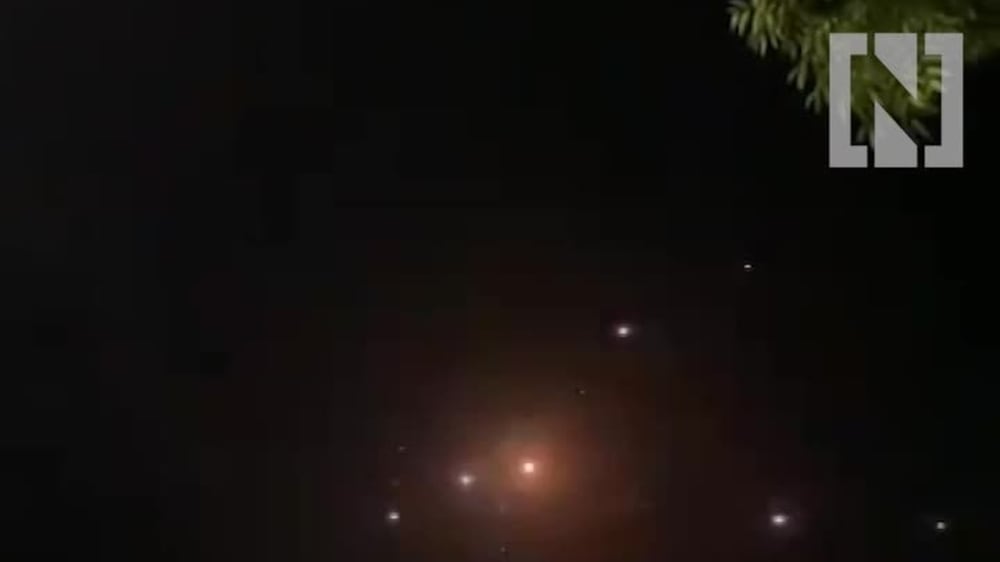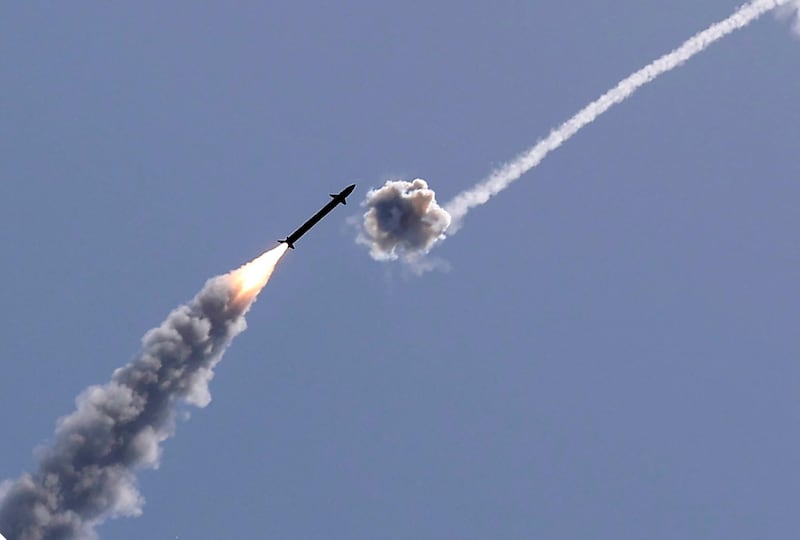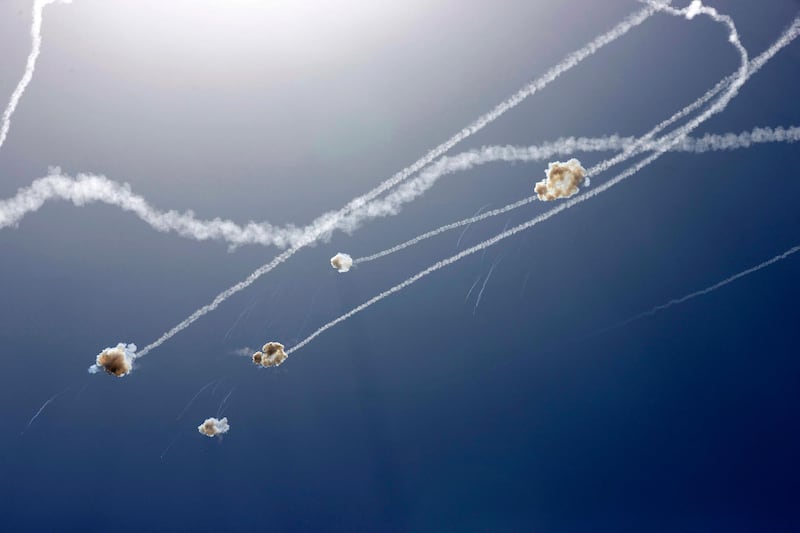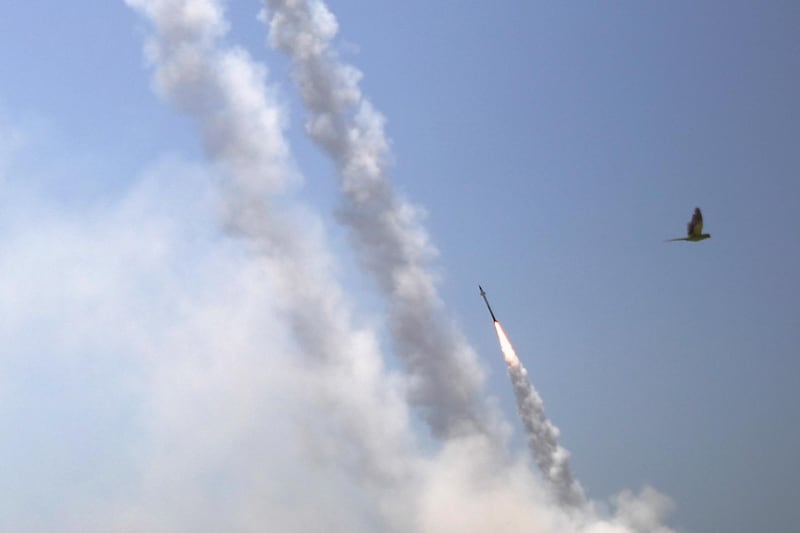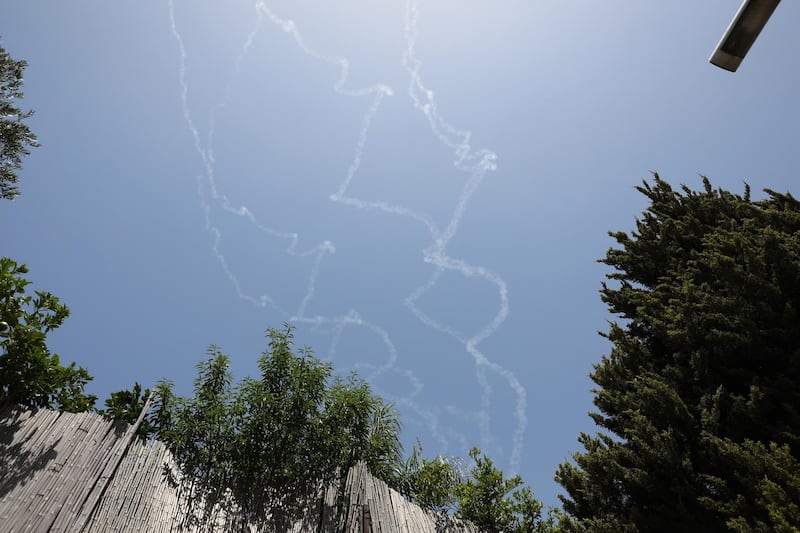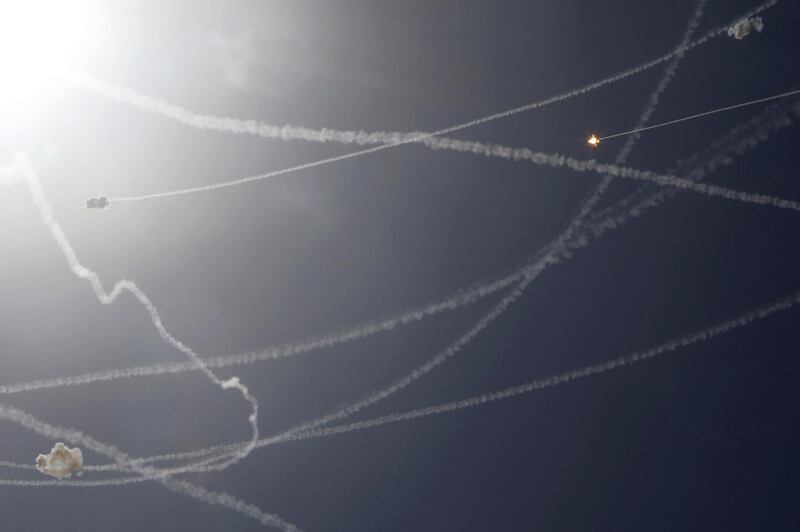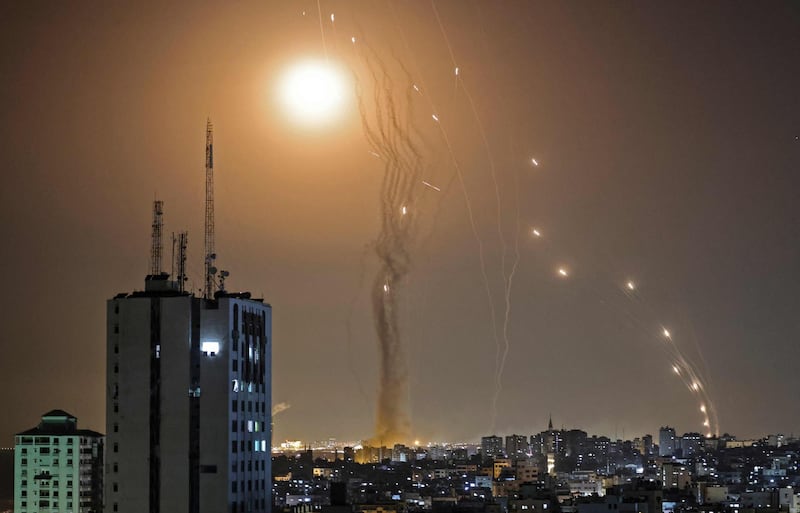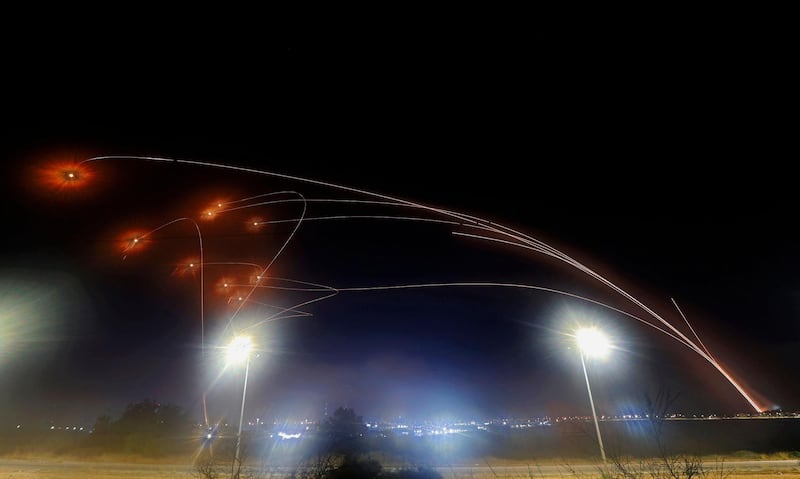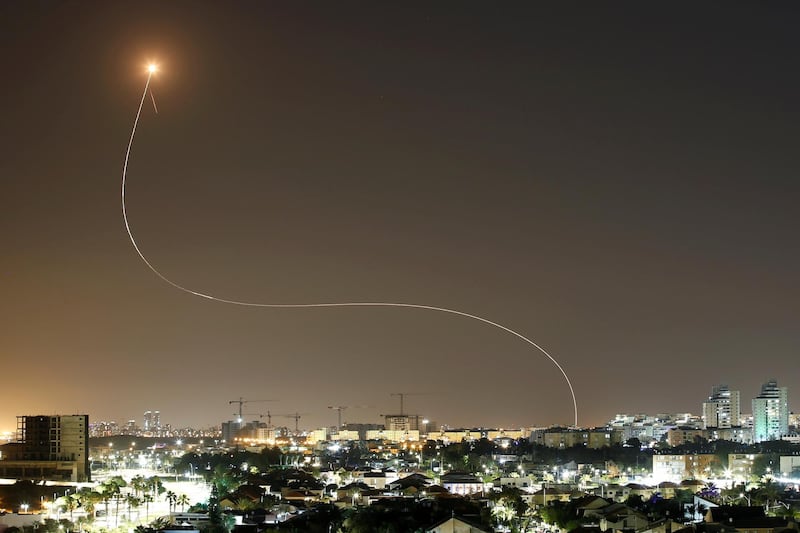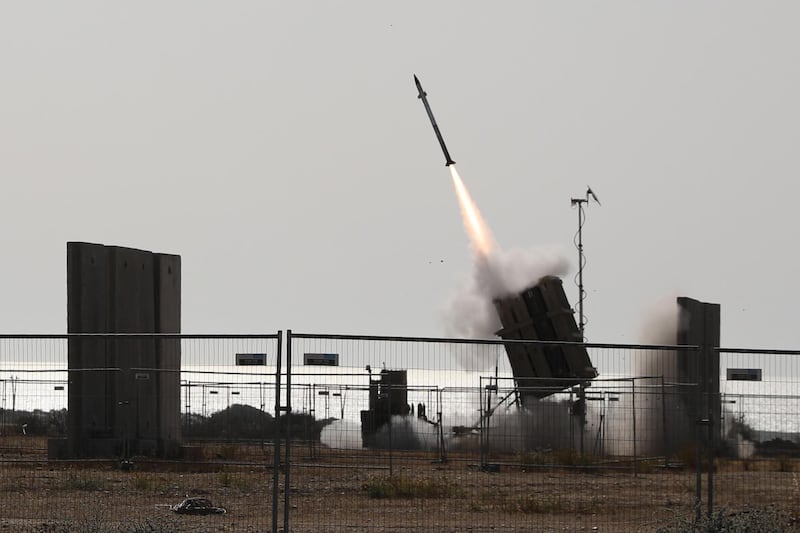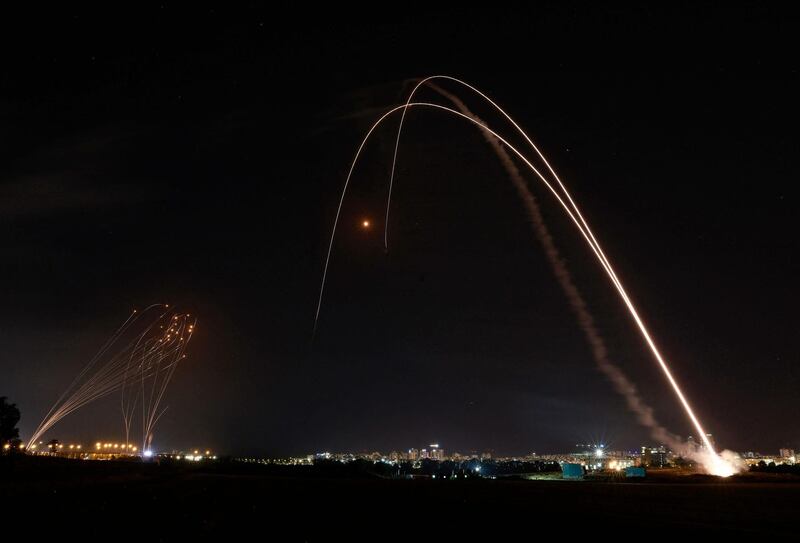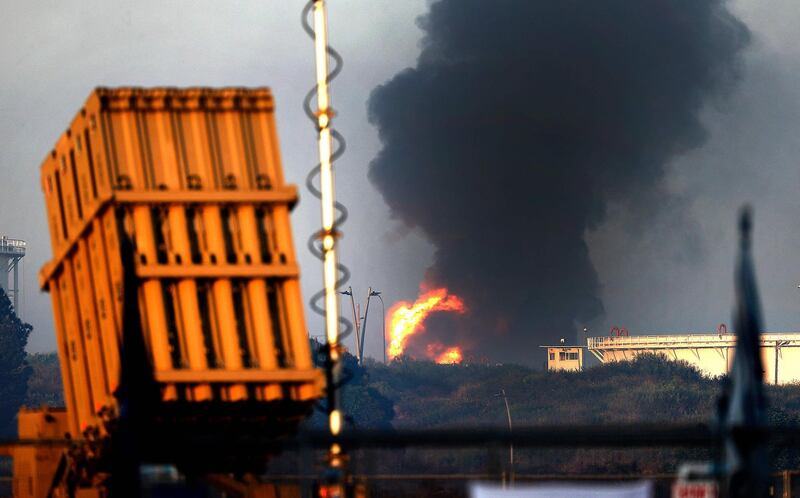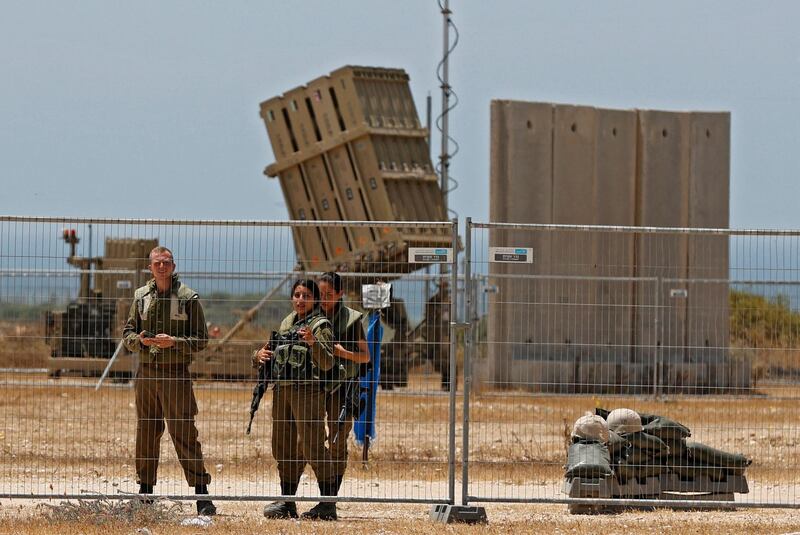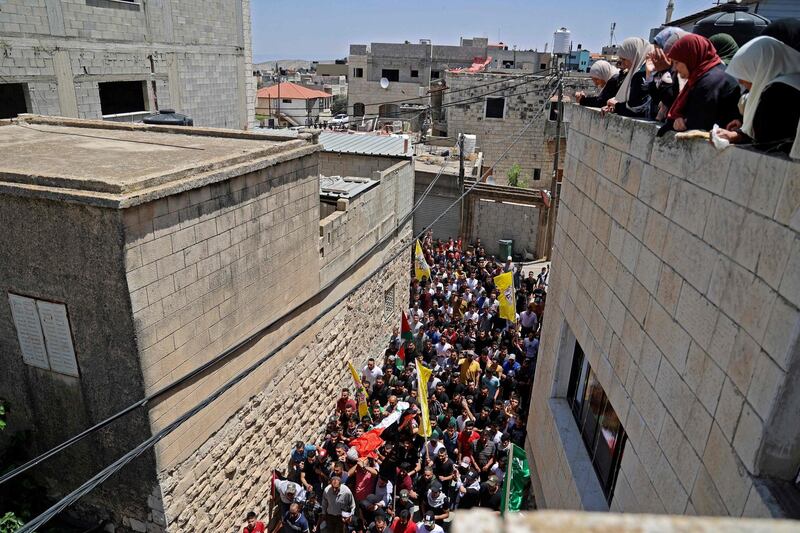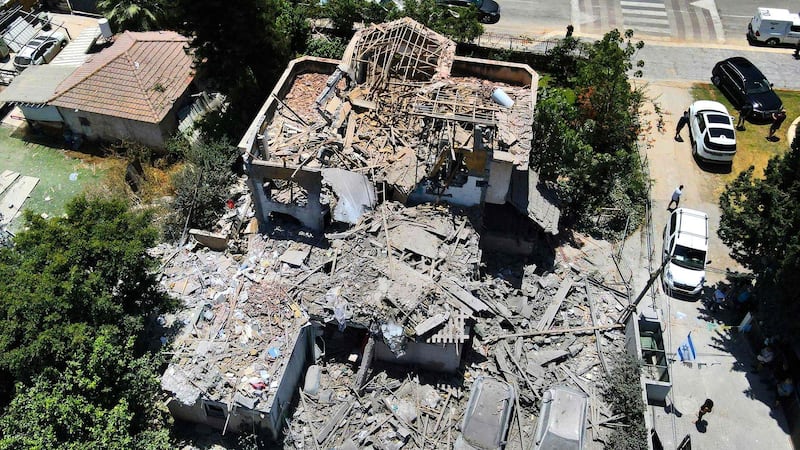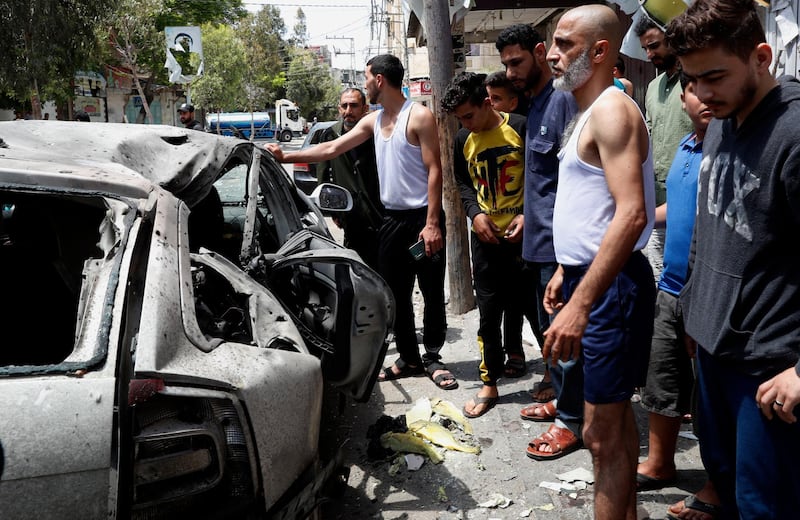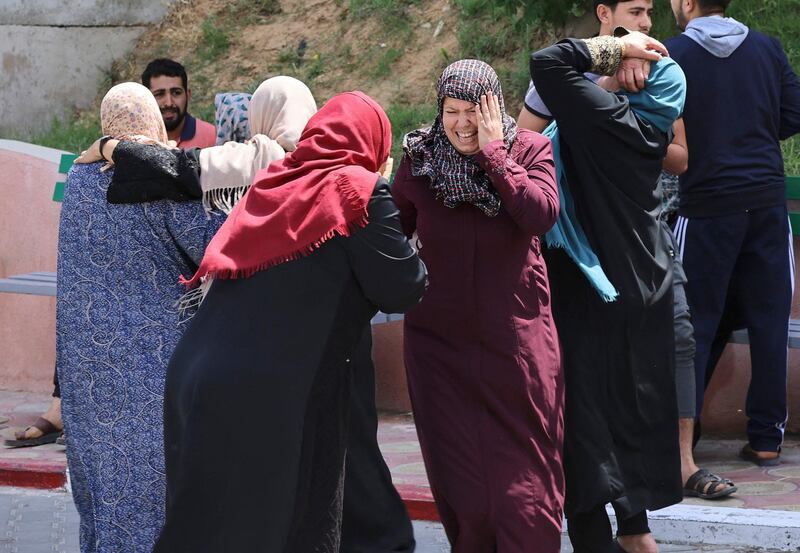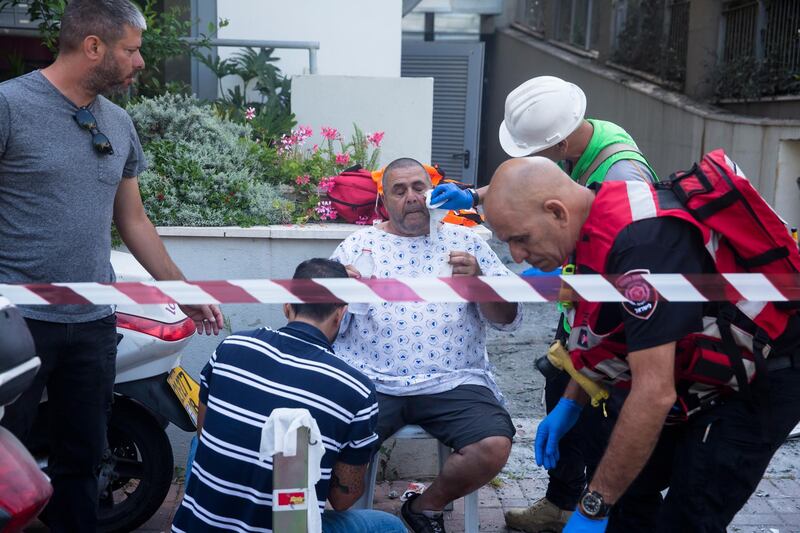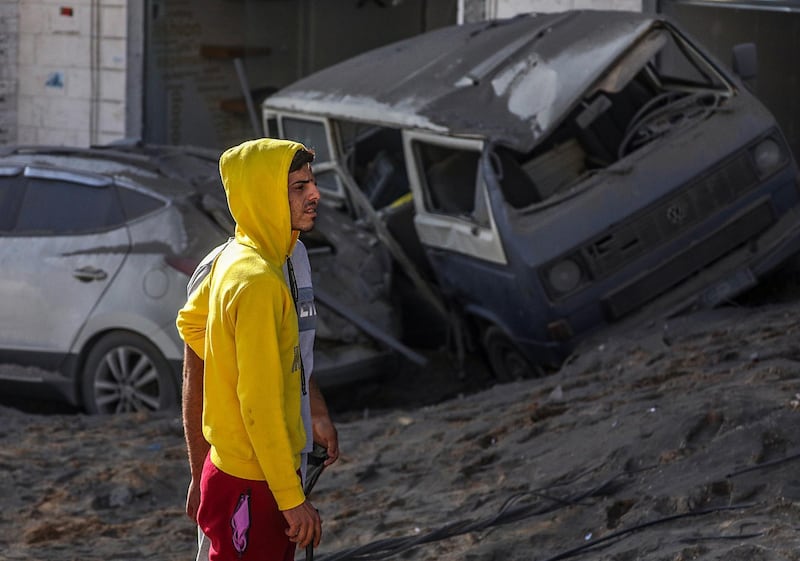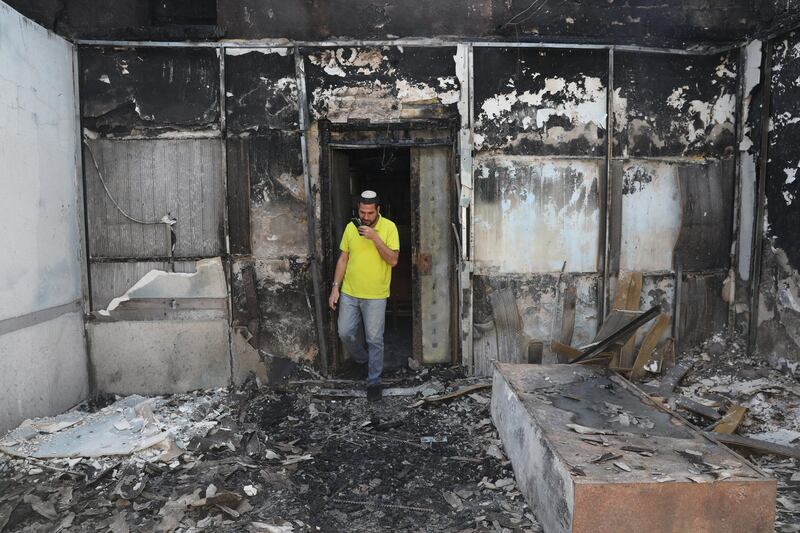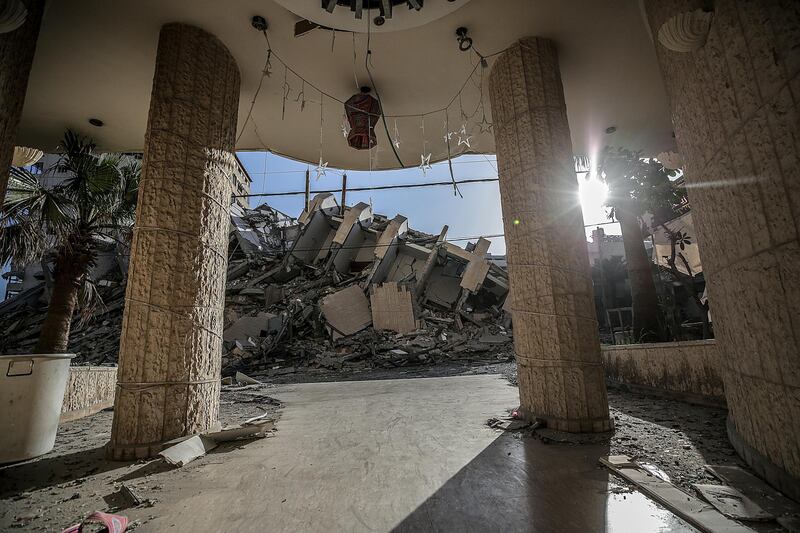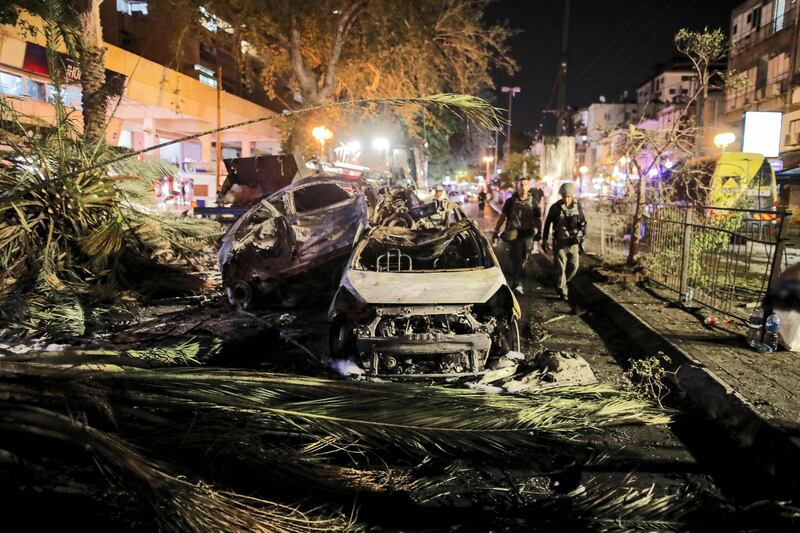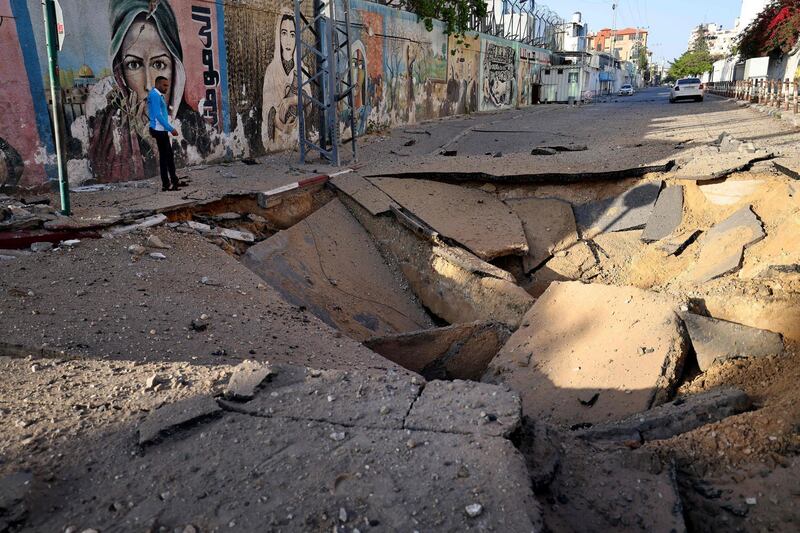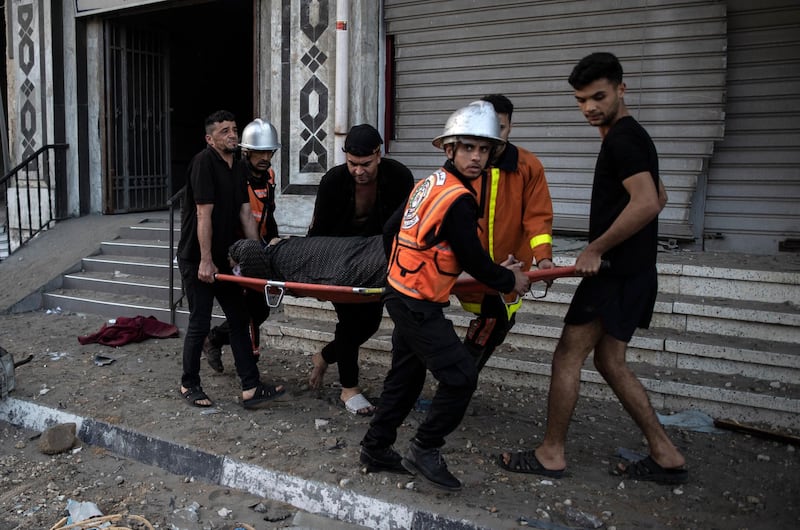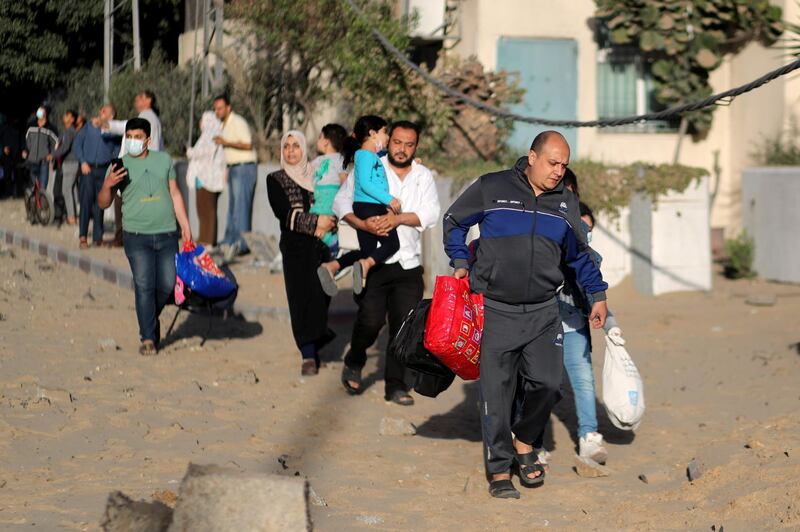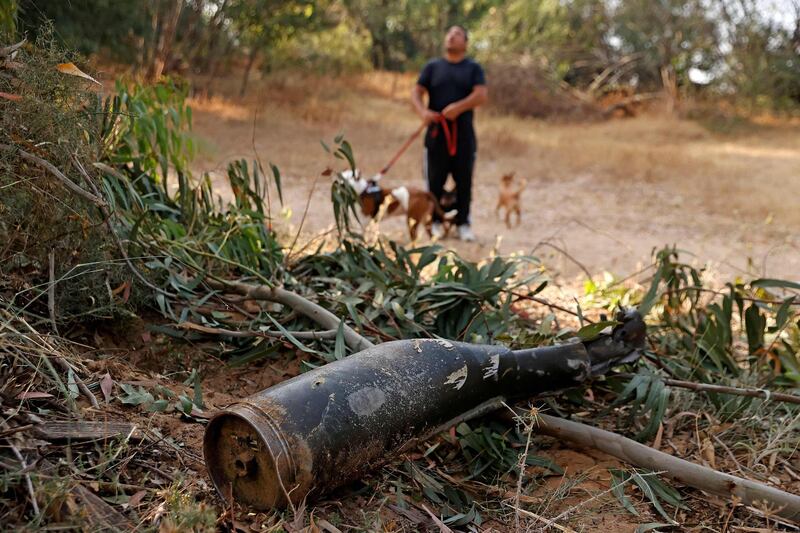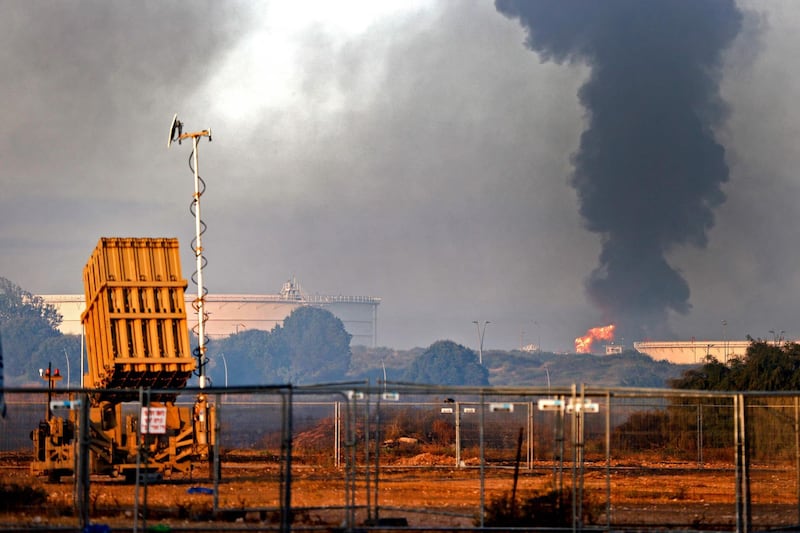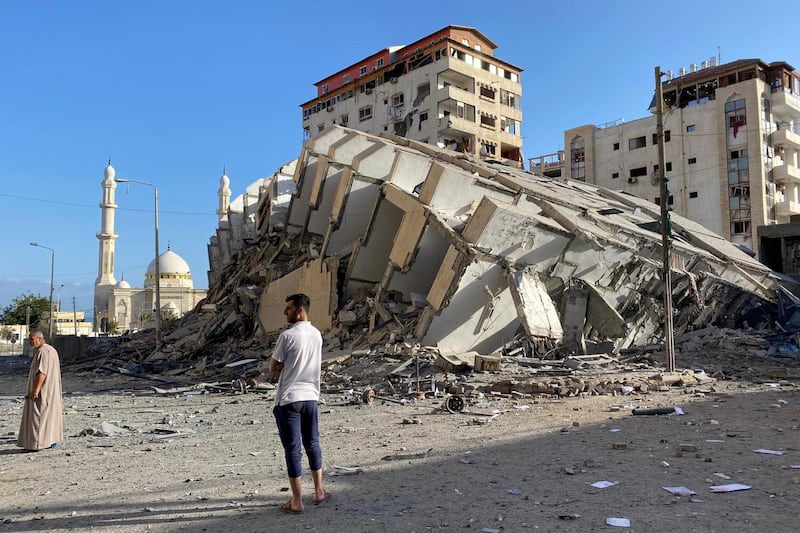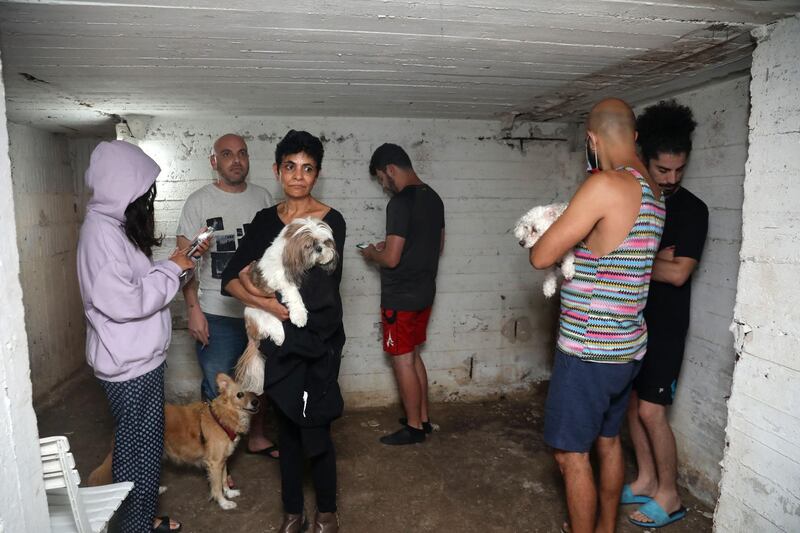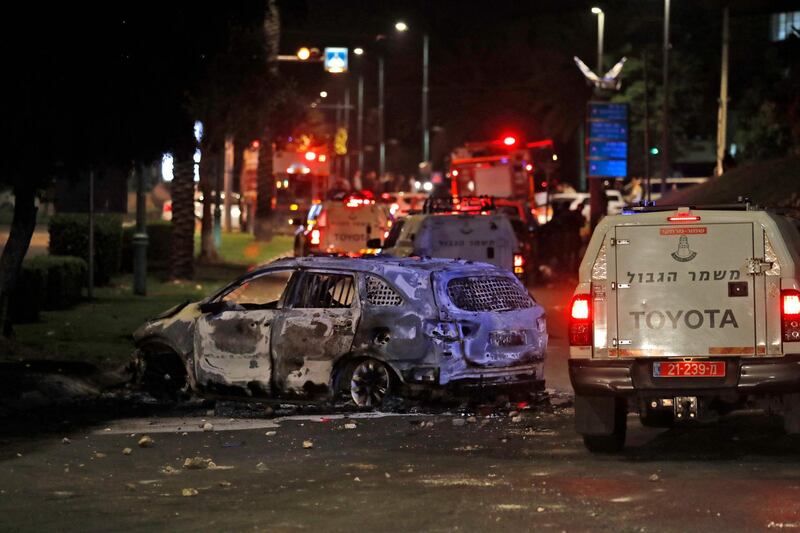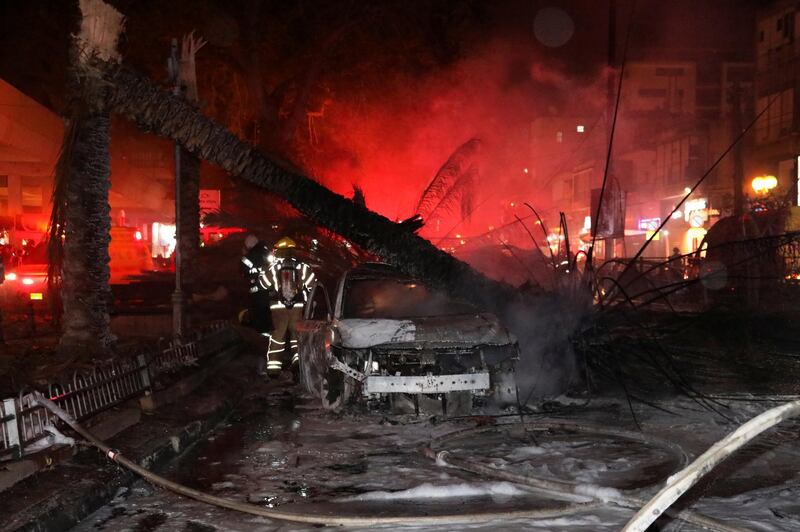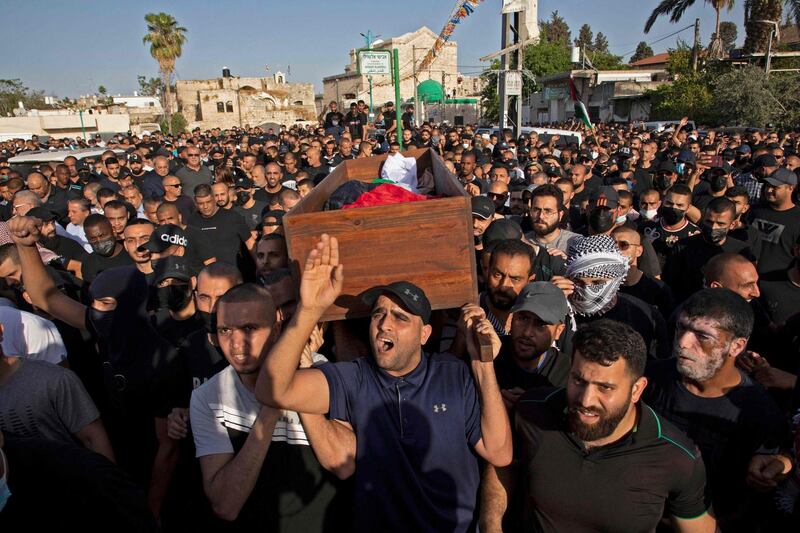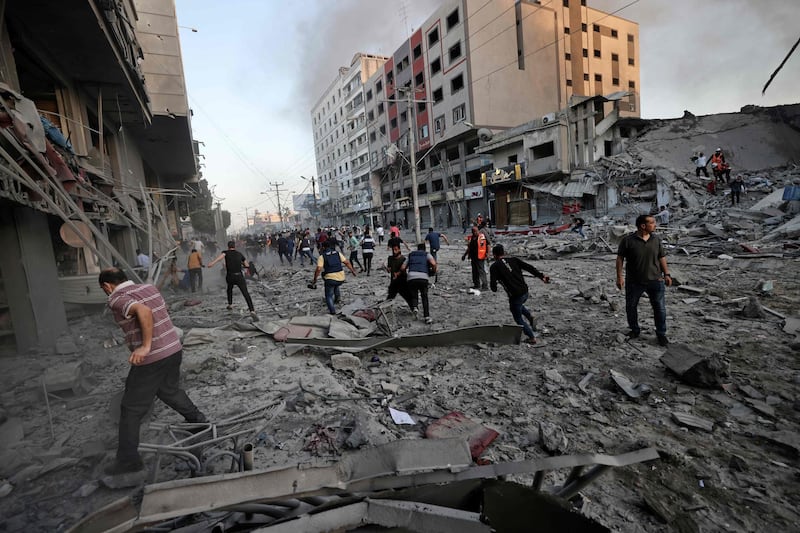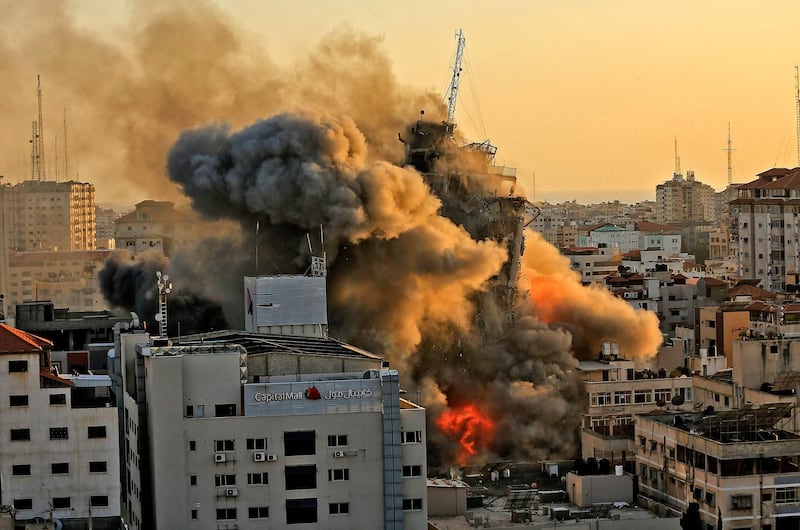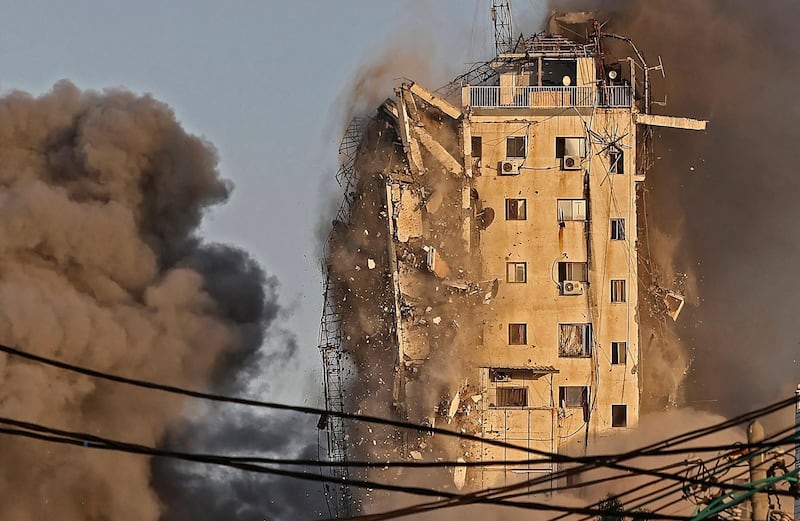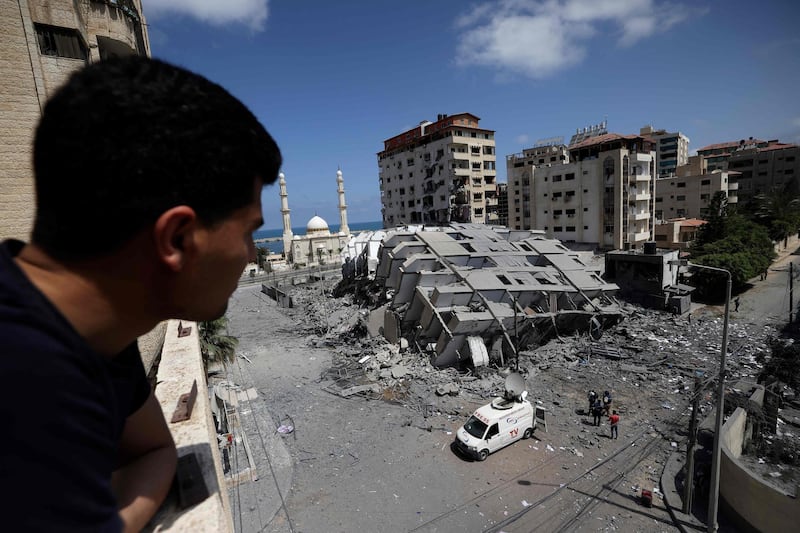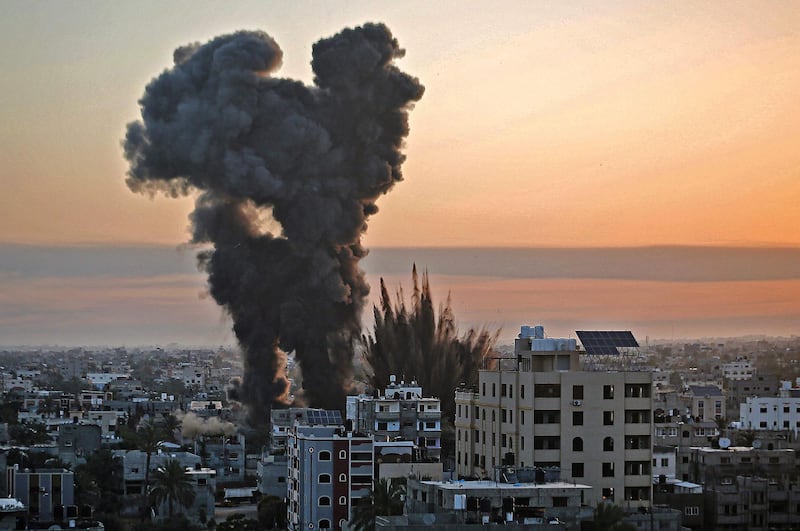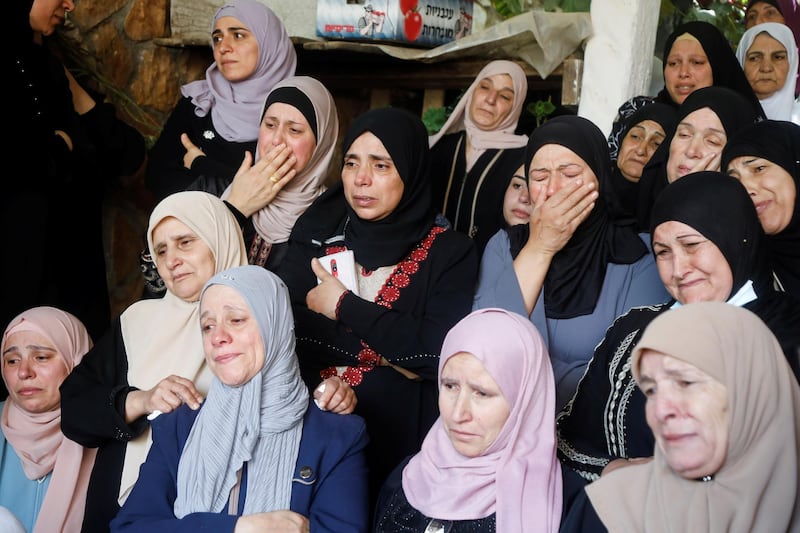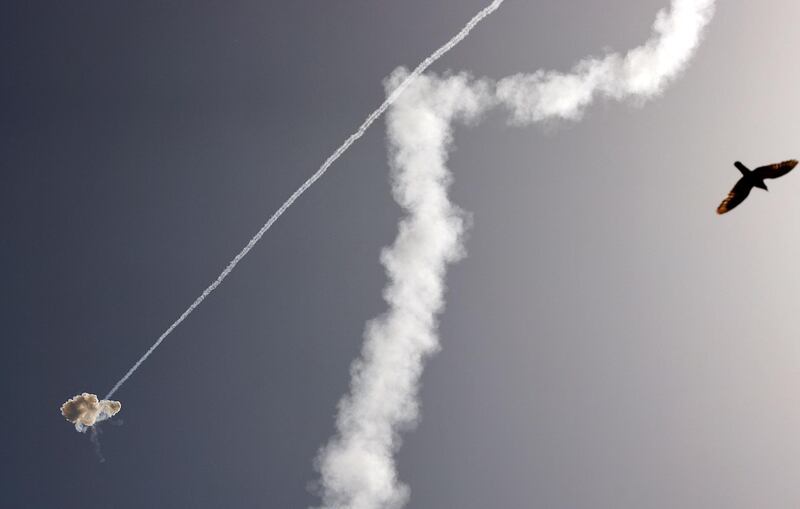Follow the latest updates as violence escalates in Israel and Palestine
Israel's much-vaunted Iron Dome missile defence system is intercepting a barrage of rockets fired by Hamas and other Palestinian militants from Gaza as bloody clashes escalate.
It is the cornerstone of Israel's aerial defence set-up, designed to shoot rockets out of the sky.
According to the Israeli military on Tuesday, 200 of the more than 480 rockets that were fired the day before had been intercepted by the system.
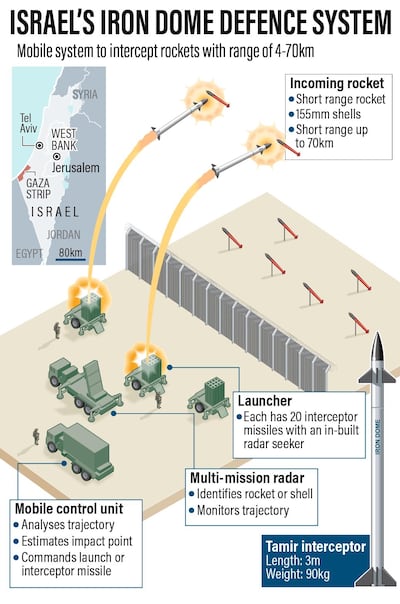
On Wednesday, the military updated the figure to more than 1,000 rockets launched towards Israel, of which 850 landed or were shot down.
Israeli authorities claimed that about 200 rockets fired from the Gaza Strip towards Israeli territory exploded inside the Gaza Strip.
The Israeli-designed Iron Dome system is meant to protect populated areas and critical assets by neutralising short-range aerial threats.
Each battery has a radar detection and tracking system, a firing control system and three launchers for 20 interceptor missiles. Each has a range of between four and 70 kilometres.
The head of the Israel Missile Defence Organisation, Moshe Patel, said that, as of January, the Iron Dome had intercepted more than 2,400 projectiles during the past decade.
An interceptor missile is meant to fire only if the trajectory of the rocket appears to be headed towards populated or important areas. With each launch reportedly costing almost $50,000, Mr Patel told the Times of Israel that it had "saved hundreds of lives".
Residential tower in Gaza collapses after Israeli air strike
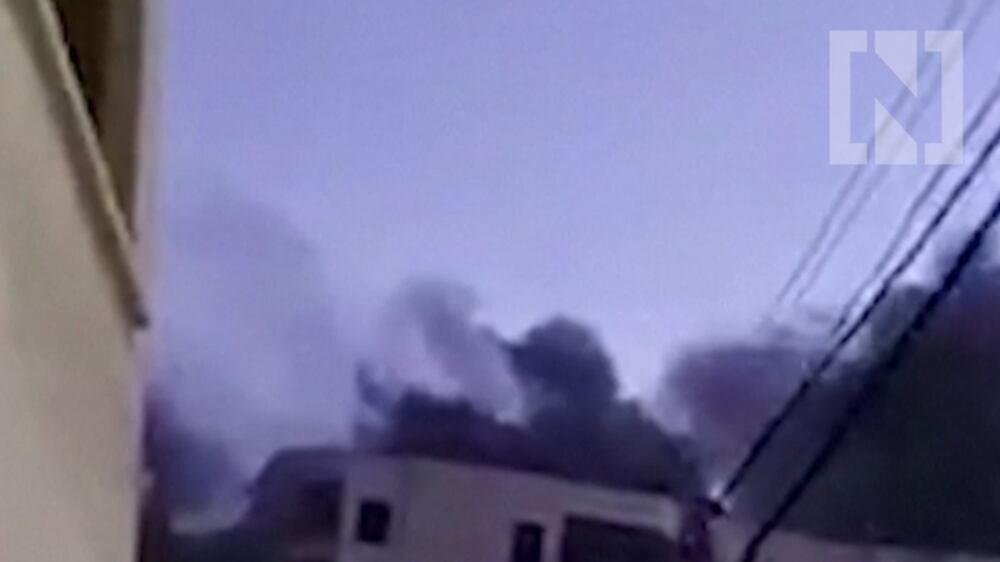
The interceptors are fired vertically from the mobile or static Iron Dome sites and hit the incoming projectile, destroying the rocket mid-air. The trails from the winding interceptors and the blast smoke have become a common sight over Israeli cities near the Gaza Strip whenever there are outbreaks of violence.
Israeli military officials say that the system is 90 per cent effective at downing rockets, although analysts question the numbers.
One concern is that while the system may be capable of preventing sporadic salvos even if they number hundreds of rockets, they could be overwhelmed by a sustained massive bombardment.
Hamas in Gaza and Hezbollah on the Lebanese border possess hundreds of thousands of rockets.
The first battery was installed in March 2011 near the southern city of Beersheva – 40 kilometres from the Gaza Strip, and a favourite Hamas target – to combat Soviet-designed Grad rockets fired from the Palestinian territory.
Israel now has 10 such batteries.
Iron Dome was developed by Rafael Advanced Defence Systems, a state-owned arms company in the northern city of Haifa.
But it is also partly funded by the US, which committed $5 billion to its development costs in 2016.
It is one of the strategic pillars of the US-Israeli alliance that has been followed by successive Democratic and Republican administrations.
In August 2019, the US army signed a contract to purchase two Iron Dome batteries to enhance its own short-range missile defence capabilities.
Israel has other missile defence systems such as the Arrow, to counter ballistic missiles, and David's Sling, for medium-range rocket or missile attacks.
The idea of the three systems is to create a protective bubble around Israel that can defend against short-range rockets, like those from Gaza, longer-range rockets, like those they fear could be fired from Syria, or even longer range threats posed by Iran or others farther away.
Military experts say 13 Iron Dome batteries are needed to be able to defend the whole of Israeli territory, with its tense border with Syria also particularly at risk of attack.
